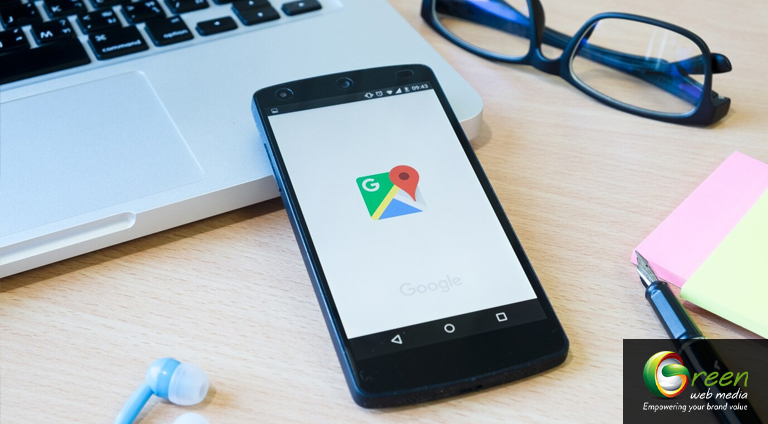Why Improving User Experience is Crucial for SEO

When you design and publish a website, it has two key purposes –
- -It should allow searchers to move to your website
- -It should improve the dwell time of the visitor when they browse the site
These steps help you convert a total stranger into a customer for your brand.
But this can happen only when you have a strategic can carefully crafted SEO campaign powering your brand.
In 2024, it is no longer enough to build link farms and hope that you get the leads you are hoping for. Search engines like Google want users to get immense value from the process of search. This is why they rank only those sites that deliver amazing user experience as a part of their search algorithm updates.

The Relationship between UX and SEO
User Experience focuses on enhancing visitors’ interaction with a website. Web developers incorporate features like ease of navigation and visual appeal to enhance UX. Valuable content and ease of information search also improve UX tremendously. When these factors come together, your website visitor is likely to have a good time browsing the site. This will contribute to conversions.
Next, we come to Search Engine Optimization or SEO. It is a popular digital marketing technique. It aims to improve site visibility and ranking on search results.
Now, you might be interested to know how these two aspects are interconnected. Let us find out!
[1] Higher Rankings
Good UX design leads to higher rankings. When users have a seamless experience, they stay longer on your site. This aspect decreases the bounce rates. It also signals relevance to search engines.
[2] Better Engagement
A well-designed UX encourages engagement. Site visitors will dwell longer on the site. Plus, there is a chance of more interactions with a UX-centric site. This way, engaged users positively impact SEO.
[3] Increased Traffic
Positive UX attracts organic traffic. When users find value in your site, they’re more likely to share it. This will lead to more visibility.

The Importance of UX for SEO
In the past, web designers focused on creating sites only for search engines. As long as a site had content, backlinks, and keywords, it could rank. However, today’s algorithms are different. They prioritize users’ intentions and experiences. Here’s why UX matters:
[1] Higher Rankings:
When users have a positive experience on your website, it helps your online presence. They tend to stay longer. They are likely to explore more pages and engage with your content. This behaviour signals to search engines that your site is relevant and valuable.
The low bounce rates and longer visit durations help a lot. They contribute to higher rankings. Google interprets these signals as an indicator of quality content.
[2] Better Engagement:
UX design directly influences user engagement. Your site needs to be easy to navigate. It should load quickly and present valuable content. If you succeed in these areas, then users are more likely to interact with it.
Engaged users are more likely to share your content. They would be inclined to link to it and revisit your site. These actions positively affect your SEO efforts.
[3] Boost in Site Traffic:
When you site has stellar UX, it goes a long way in attracting organic traffic. When users find value in your site, they are motivated to let others know. Hence, they recommend it to others or share it on social media.
The resulting boost in traffic translates to better visibility. Search engines recognize your site as relevant. As a result, it is rewarded with higher rankings.
[4] Google’s Emphasis on site UX:
The search engine giant gives a clear preference to sites that work towards improving user experience. Its algorithms prioritize user satisfaction. Their goal is to provide the best results for search queries.
If your site has an amazing UX, there is a chance that Google will rank it higher. It will not be wrong to say that user-centric design aligns with the search engine’s mission.
1.Conversion Impact:
- Explanation: UX directly affects conversions, whether it’s sales, sign-ups, or inquiries. A seamless checkout process, clear calls-to-action, and trust-building elements enhance conversions.
- Impact on SEO: Conversions indicate user satisfaction and relevance. Google considers this when ranking websites.

How to improve UX for a website?
Now that you know the immense impact of UX on SEO, we can progress to the next phase. Here, we look at a few important ways in which your site’s UX can be made better.
1 – Mobile and Desktop Optimization
The first step to do is make certain your site appears and renders properly on the mobile devices. This is a super-critical UX success enabler. People may browse through your site via different devices. These may include smartphones, tablets, or laptops. They need to feel uniformity on all devices when they visit your site.
Mobile optimization involves implementing responsive design techniques. This technique automatically adjusts the layout, content, and navigation to fit seamlessly on smaller screens. to meet this goal, you can use flexible grids. You can also consider resizing images and media. Also, you should prioritize content for mobile users. Plus, you can think about adding touch-friendly navigation to your site. Examples include hamburger menus and larger tap targets. This action will propel the mobile experience.
For desktop optimization, you should leverage the larger screen real estate. You can ensure this by providing more detailed content. Plus, it is wise to offer rich media and advanced functionality on the site. But in the midst of doing all these things, remember to maintain a clean and organized layout. Go with clear navigation and visual hierarchy for a tidy appearance. Some web developers may suggest features like parallax scrolling and hover effects. They help a lot in boosting the desktop experience without compromising usability or performance.
2 – Speed Optimization
Website speed is a critical factor in user experience and search engine rankings. Both search engines and searchers abhor slow-loading pages. Hence, this might lead to high bounce rates and decreased conversions. These result in a poor search engine visibility.
Hence, you need to optimize your website’s speed. For this, you can start by compressing images and media files. The reason is simple. They often account for a significant portion of page weight. Some web development experts suggest minifying HTML, CSS, and JavaScript files. You can do this by removing unnecessary whitespace and comments. Such steps decrease file sizes and elevate page load speed.
You can also think about browser caching. It allows previously downloaded resources to be served from the user’s cache. Doig so will bring down server load and improve load times. Another smart idea here would be to add a content delivery network or CDN. It helps distribute your website’s content across multiple servers around the world. This will make sure of faster delivery to users based on their geographic location.
Also see if you can apply techniques like lazy loading and server-side rendering. These aspects will further enhance performance.
3 – Navigation Optimization
You must have an easy-to-use navigation system on your website. This will help visitors to your website in finding what they’re looking for. This goal can be met in a few ways. Making a sensible site structure is a good place to start. Your information will be arranged in a way that makes sense to your intended audience as a result. This structure should be reflected in your main navigation menu. It will include the most important sections of your site.
Next, you can use descriptive and concise labels for your navigation links. It is better to avoid technical jargon or ambiguous terms. You can also factor in breadcrumb navigation. This will help users understand their current location within the site hierarchy and provide a clear path back to higher levels.
Consistency is key when it comes to navigation. Your navigation elements like menus, links, and buttons should appear and function consistently across all webpages. This familiarity brings down cognitive load. It makes it easier for users to navigate your site.
4 – Content Optimization
One of the key ways to boost your site UX is to focus on superior quality content. Such relevant and well-structured content is crucial. It helps in engaging users. Plus, it offers a positive experience on your website. You can execute this strategy by ensuring that your content is organized logically. It needs to follow a clear hierarchical structure. To split up the content, you can use descriptive headings and subheadings. Users will find it simpler to scan and locate the information they need if these steps are followed.
Another good idea here would be to add relevant visuals. You can think about adding images, videos, and infographics. They will supplement your text content and improve the understanding of the topic being discussed. However, you need to be mindful of overdoing it. This is because too many visuals can be distracting. It may even slow down page load times.
A good content optimization tactic would be to pay attention to content formatting. Here, you need to consider font choices, line spacing, and paragraph structure. By doing this, you can make sure that your content is readable. All users, including those with disabilities, can use the content and benefit from it.
Also, you should consider adding features like search and related content suggestions. Even social sharing options will help. These points let you further strengthen the content experience and encourage engagement.
To conclude
Remember, UX and SEO go hand in hand. Prioritize user experience, and you would be bound to see positive impacts on your rankings and overall online success. These optimization techniques will definitely be of assistance to you




